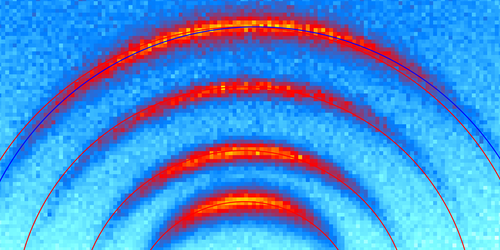Ion Recoil from Photon Beam Observed
Glowing gaseous nebulae provide one of the most aesthetic examples of photoionization, a process where energetic photons knock electrons out of an atom’s orbit, leaving behind a charged ion. In experiments, the electrons stripped during photoionization carry a forward-directed momentum greater than that of the incident photons. Theorists propose that the ion must have a backward-directed motion to conserve momentum, but evidence of that has proven elusive. Now Sven Grundmann at Goethe University in Germany and colleagues have observed these backward-recoiling ions. Their experiment could help explain astrophysical observations, such as the separation of chemical elements in stars.
To explore how a photon’s momentum drives photoionization, the researchers targeted helium (He) and dinitrogen ( N2) gases with photons that had a wide range of energies. They then used a spectroscopy technique to determine the 3D momentum distributions of the resulting He+and N+2 ions. They found that the average momentum of the ions was opposite in direction to that of the photons and that this backward-directed momentum depended linearly on the photon momentum. The data also revealed how the ions get their backward momentum: While the ions received a forward momentum boost upon absorbing a photon, the recoil kick from the ejection of the electron was larger, pushing the ion backwards.
Understanding the details of how photoionization works could help researchers optimize its use in technologies that harness photon momentum, such as laser cooling. Future studies in the multiphoton regime—where multiple photons impact an ion—could test whether strong fields direct ions in the same way as weak single-photon ones.
This research is published in Physical Review Letters.
–Rachel Berkowitz
Rachel Berkowitz is a Corresponding Editor for Physics based in Seattle, Washington, and Vancouver, British Columbia




